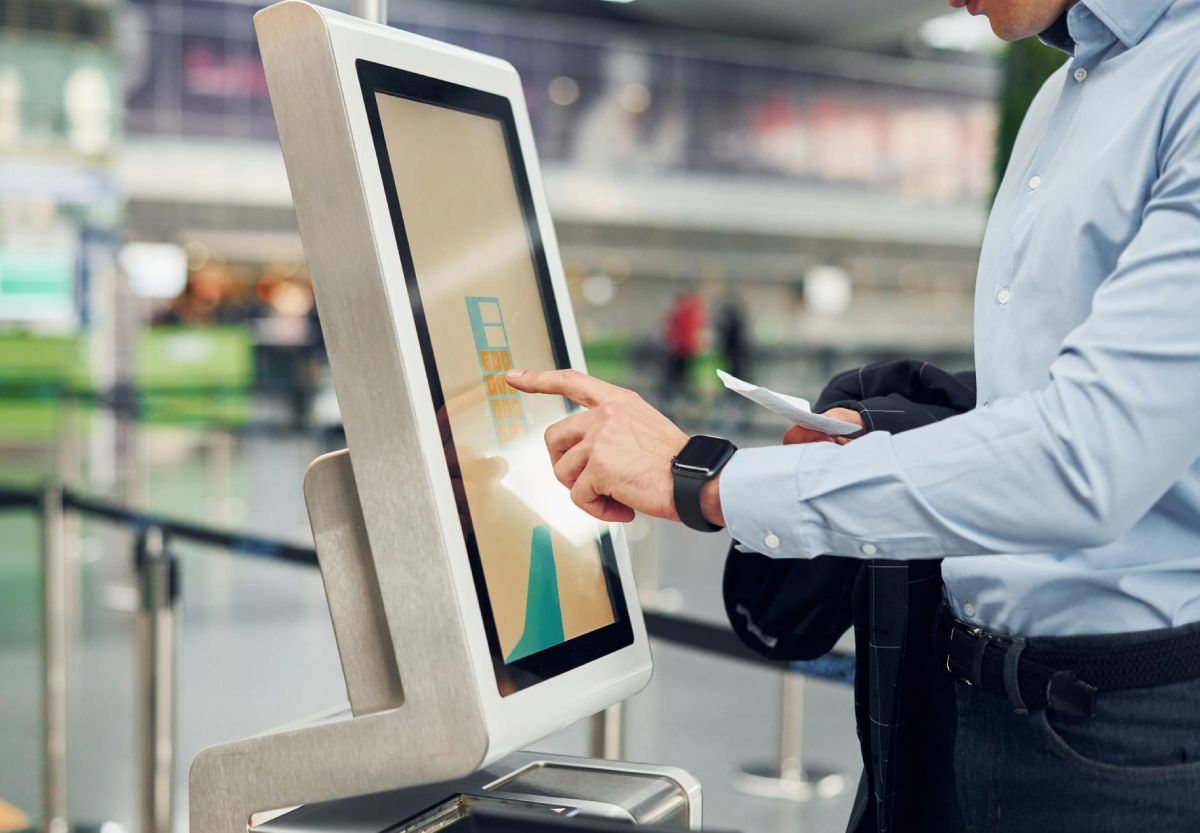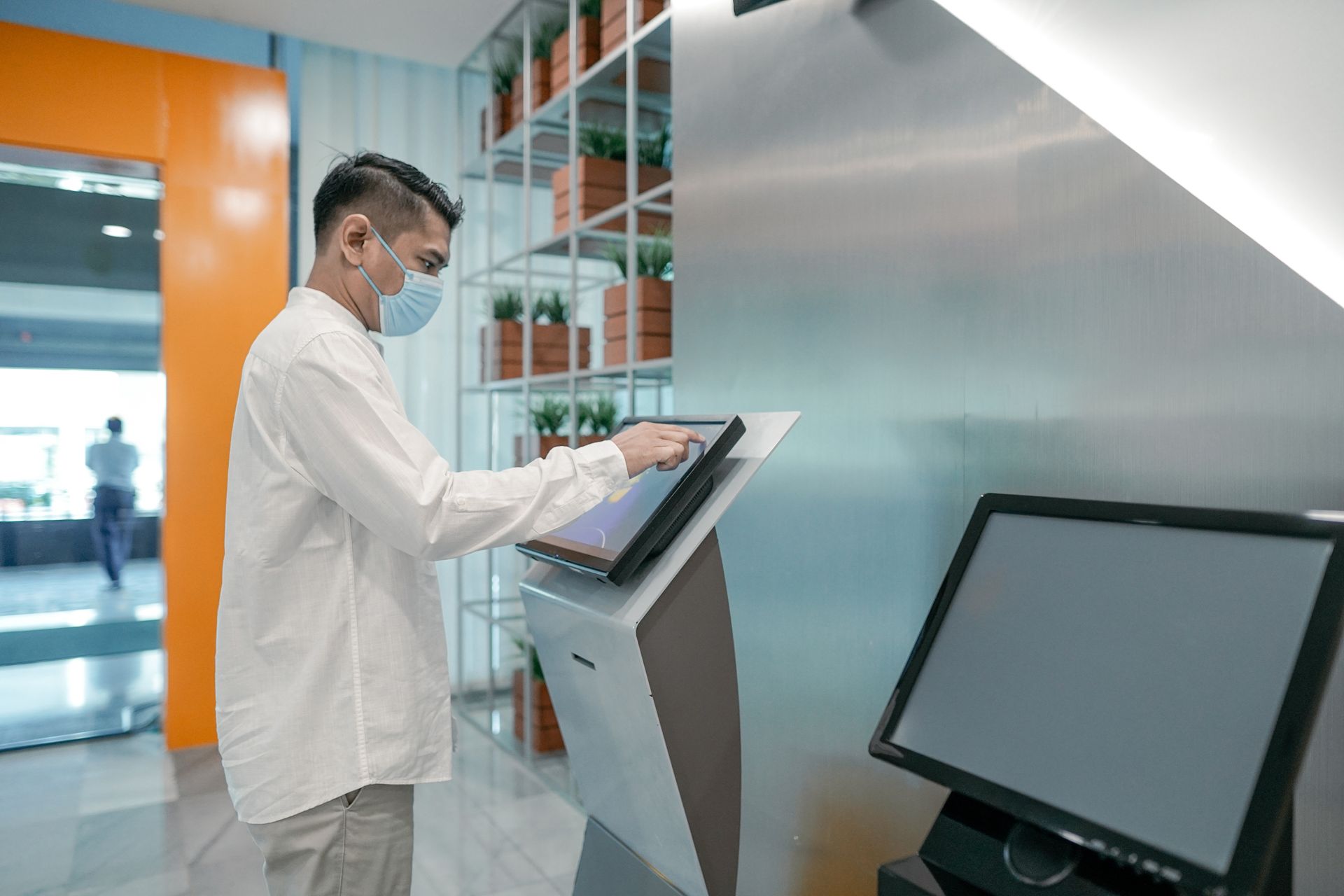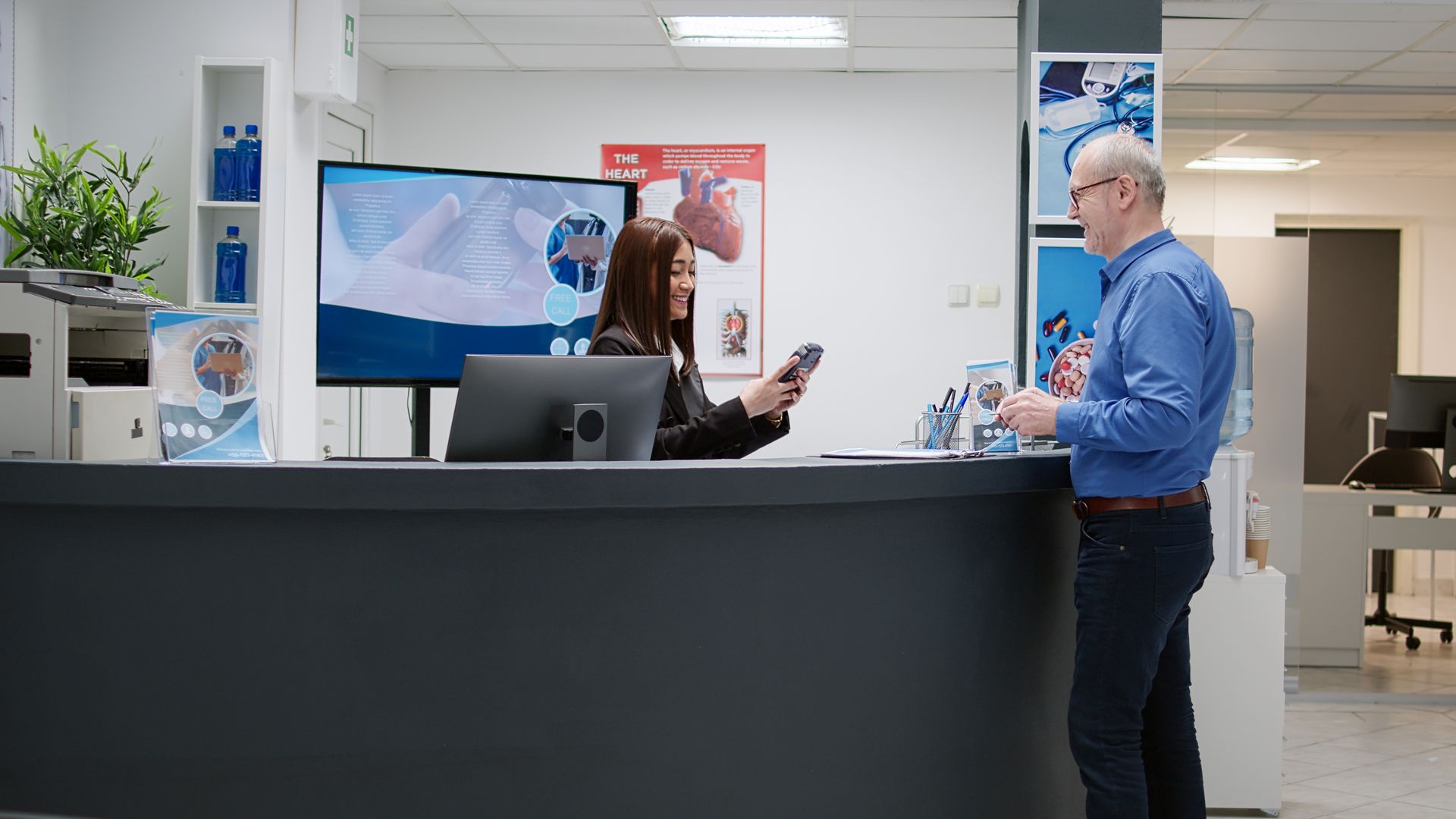Advanced Algorithms in Modern Queuing Systems: How They Optimize Wait Times and Improve Customer Flow
Advanced Algorithms in Modern Queuing Systems: How They Optimize Wait Times and Improve Customer Flow

As Saudi Arabia continues to grow and modernize its economy, the demand for efficient customer service solutions has never been higher. In environments with large crowds and high demand, such as shopping malls, hospitals, and government offices, managing queues effectively is crucial. Modern queuing systems, powered by advanced algorithms, are revolutionizing the way businesses and institutions in Saudi Arabia handle customer flow. These systems optimize wait times, improve customer satisfaction, and enhance overall service efficiency. This article explores the advanced algorithms behind these systems and how they are transforming the queuing experience in Saudi Arabia.
Understanding Queuing Systems in Saudi Arabia
Queuing systems are essential tools for managing customer flow in high-demand environments. In Saudi Arabia, where retail, healthcare, and public services often see large volumes of customers, effective queue management is critical. Traditional queuing methods, such as manual ticketing or simple first-come, first-served approaches, often lead to long wait times and customer dissatisfaction. In contrast, modern queuing systems leverage advanced algorithms to streamline operations and ensure that customers are served more efficiently.
In Saudi Arabia’s rapidly expanding cities like Riyadh, Jeddah, and Dammam, the challenge of managing queues is particularly pronounced. Shopping malls, government offices, and healthcare facilities frequently deal with large numbers of visitors, making it essential to adopt advanced queuing solutions that can handle the complexity and scale of these environments.
The Role of Algorithms in Modern Queuing Systems
At the heart of modern queuing systems are algorithms—complex mathematical formulas and decision-making processes that determine how queues are managed. These algorithms are designed to optimize the flow of customers, minimize wait times, and allocate resources efficiently.
Common algorithms used in queuing systems include:
- First-In-First-Out (FIFO): The simplest form of queuing where the first customer to arrive is the first to be served.
- Priority Queuing: Customers are served based on predefined priorities, such as appointment time, membership status, or service type.
- Load Balancing: Distributes customer load evenly across available service points to prevent any single queue from becoming too long.
In advanced systems, these algorithms work in tandem, using real-time data to adjust and optimize the queuing process dynamically. This capability is particularly important in Saudi Arabia, where customer expectations for fast and efficient service are rising.
How Advanced Algorithms Optimize Wait Times
One of the primary benefits of using advanced algorithms in queuing systems is the optimization of wait times. By predicting demand and adjusting queues in real-time, these algorithms can significantly reduce the time customers spend waiting.
Predictive Algorithms:
Predictive algorithms analyze historical data and current trends to forecast peak times and allocate resources accordingly. For example, in a retail environment, the system might predict higher traffic during weekends or holidays and adjust staffing levels and queue management strategies in advance.
Real-Time Data Processing:
Advanced queuing systems constantly monitor the status of queues, using sensors and data analytics to make real-time adjustments. If a queue becomes too long, the system can automatically redirect customers to shorter queues or open additional service points, ensuring that wait times are kept to a minimum.
Examples in Saudi Arabia:
In Saudi Arabia, retailers and service providers are increasingly adopting these systems to manage high customer volumes. During the Hajj season, when millions of pilgrims visit the Kingdom, advanced queuing algorithms help manage the massive influx of people in shopping centers, hotels, and transportation hubs, ensuring that services run smoothly.
Improving Customer Flow with Smart Algorithms
Beyond reducing wait times, smart algorithms also play a crucial role in improving overall customer flow. These algorithms are designed to guide customers through the service process in the most efficient way possible, ensuring that each step is streamlined and intuitive.
Queue Management Techniques:
Algorithms can automatically direct customers to the shortest or fastest-moving queues, balance the load across different service points, and even predict when additional service counters need to be opened. This helps in maintaining a steady and controlled flow of customers, preventing bottlenecks and ensuring a smoother service experience.
Enhancing Service Efficiency through Algorithm-Driven Systems
Service efficiency is a key concern for businesses and institutions in Saudi Arabia, where providing high-quality service is critical to maintaining customer satisfaction and loyalty. Advanced queuing algorithms contribute to this by optimizing various aspects of service delivery.
Staff Allocation and Service Speed:
Algorithms can analyze customer flow patterns and adjust staff allocation in real-time, ensuring that service counters are always adequately staffed during peak periods. This not only speeds up service but also allows businesses to make the most efficient use of their workforce.
Impact on Operational Efficiency:
By automating the management of queues and customer flow, businesses can reduce the need for manual intervention, freeing up staff to focus on more complex or high-value tasks. This leads to a more streamlined operation and reduces the likelihood of errors that can occur with manual queue management.
Role of AI and Machine Learning:
Artificial Intelligence (AI) and machine learning are increasingly being integrated into queuing algorithms to enhance their capabilities. These technologies enable systems to learn from past data and continuously improve their performance, leading to even greater efficiency and accuracy over time.
Real-World Applications of Advanced Queuing Algorithms in Saudi Arabia
The use of advanced queuing algorithms is becoming more prevalent across various sectors in Saudi Arabia. From healthcare to government services to retail, these systems are proving their value in enhancing customer experiences and operational efficiency.
Healthcare Sector:
Hospitals and clinics in Saudi Arabia, especially in major cities like Riyadh and Jeddah, are implementing advanced queuing systems to manage patient flow more effectively. By using algorithms to prioritize cases based on urgency and streamline the registration process, these healthcare facilities are able to provide faster and more efficient care.
Government Services:
Government offices in Saudi Arabia, dealing with high volumes of citizens requiring services, have adopted algorithm-driven queuing systems to reduce wait times and improve service delivery. These systems are particularly useful in managing queues for services like passport renewals, driving licenses, and visa processing, where long wait times have traditionally been a challenge.
Retail and Hospitality:
Large retailers and hotels in Saudi Arabia are also benefiting from advanced queuing systems. During events like Ramadan or the Hajj season, these systems help manage the surge in customer numbers, ensuring a smooth and efficient service experience.
Customer Experience: The Impact of Reduced Wait Times and Improved Flow
Customer satisfaction is heavily influenced by the efficiency of service delivery, particularly in high-demand environments. By reducing wait times and improving the flow of customers, advanced queuing systems have a significant positive impact on customer experience.
Enhancing Satisfaction in High-Demand Locations:
In bustling cities like Riyadh and Jeddah, where customer expectations are high, reducing wait times can lead to greater customer satisfaction and loyalty. This is especially true in sectors like luxury retail and healthcare, where a seamless service experience is a key differentiator.
Seamless Customer Flow:
A well-managed queue not only shortens wait times but also contributes to a more organized and stress-free environment. Customers are less likely to feel frustrated or anxious when the flow is smooth, which enhances their overall experience.
Feedback from Saudi Customers:
Customer feedback in Saudi Arabia has been overwhelmingly positive regarding the implementation of modern queuing systems. Many customers appreciate the convenience and efficiency of these systems, particularly in busy urban areas.
Future Trends in Queuing Systems in Saudi Arabia
As technology continues to evolve, the future of queuing systems in Saudi Arabia looks promising, with several emerging trends set to transform the industry.
AI-Driven Predictions and Personalized Experiences:
The use of AI to predict customer behavior and personalize the queuing experience is expected to become more prevalent. This could include systems that adjust queue priorities based on individual customer profiles or preferences.
Advanced Data Analytics:
With the growing availability of big data, queuing systems in Saudi Arabia will increasingly rely on advanced analytics to improve accuracy and efficiency. This will allow businesses to fine-tune their operations and offer more tailored services.
Integration with Mobile and IoT Technologies:
The integration of queuing systems with mobile apps and Internet of Things (IoT) devices will further enhance the customer experience. Customers could be notified of their queue status via their smartphones, or IoT-enabled devices could provide real-time updates on queue conditions.
Best Practices for Saudi Businesses Implementing Advanced Queuing Systems
For businesses in Saudi Arabia looking to implement advanced queuing systems, following best practices is essential for success.
Successful Implementation Steps:
- Assess Needs: Understand the specific needs of your business and customers to select the right queuing algorithms.
- Choose the Right Technology: Ensure that the chosen system is capable of handling the expected volume of customers and can integrate seamlessly with existing IT infrastructure.
- Provide Training: Train staff to manage and maintain the queuing system effectively, ensuring that they can address any issues that arise.
- Monitor and Optimize: Continuously monitor the performance of the queuing system and make adjustments as necessary to improve efficiency and customer satisfaction.
Comparing Traditional vs. Algorithm-Driven Queuing Systems
Traditional queuing systems, such as manual ticketing or simple first-come, first-served methods, are becoming increasingly outdated in the face of modern, algorithm-driven solutions. These traditional methods often lead to inefficiencies, long wait times, and dissatisfied customers, particularly in high-demand environments like those found in Saudi Arabia.
Advantages of Algorithm-Driven Systems:
- Efficiency: Advanced algorithms can process and manage queues much more efficiently than manual methods, ensuring that customers are served in the optimal order.
- Scalability: Algorithm-driven systems can easily scale to accommodate fluctuating customer volumes, making them ideal for large retail spaces, hospitals, and government offices.
- Customer Satisfaction: By reducing wait times and improving the flow of customers, these systems enhance the overall customer experience, leading to higher satisfaction and loyalty.
Disadvantages of Traditional Systems:
- Inflexibility: Traditional systems are less adaptable to changing conditions and cannot easily adjust to unexpected surges in demand.
- Resource-Intensive: Manual queue management requires significant staff resources, which can be inefficient and costly.
- Customer Dissatisfaction: Longer wait times and poorly managed queues often result in frustrated customers and lower levels of satisfaction.
The Economic Impact of Optimized Queuing on Saudi Businesses
Optimizing queuing systems using advanced algorithms can have a significant positive impact on the financial performance of businesses in Saudi Arabia.
Cost Savings:
By reducing the need for manual queue management and improving staff efficiency, businesses can save on labor costs. Additionally, by improving customer flow and reducing wait times, businesses can increase throughput, leading to higher sales and revenue.
Revenue Increases:
Optimized queuing systems can lead to increased customer satisfaction and repeat business, which translates into higher revenue over time. Satisfied customers are more likely to return and recommend the business to others, further driving sales growth.
ROI Calculations:
Businesses can calculate the return on investment (ROI) of their queuing systems by comparing the costs of implementation and operation with the financial benefits gained through improved efficiency, reduced labor costs, and increased revenue. In most cases, the ROI of advanced queuing systems is highly favorable, making them a smart investment for businesses looking to improve their operations and customer experience.
Conclusion
Advanced algorithms in modern queuing systems are transforming the way businesses and institutions in Saudi Arabia manage customer flow and optimize service delivery. By reducing wait times, improving customer flow, and enhancing service efficiency, these systems are helping businesses meet the high expectations of today’s customers while also improving their financial performance. As technology continues to evolve, the role of algorithm-driven queuing systems will only become more critical in the Kingdom’s retail and service sectors.








